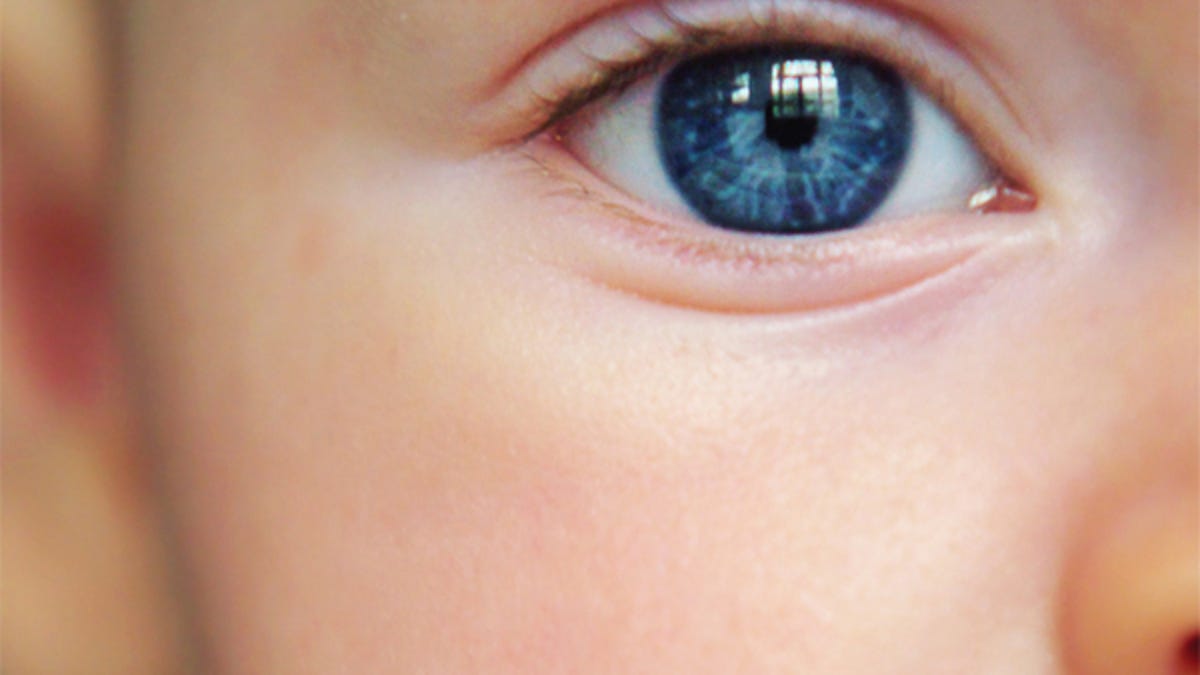Gattaca designer baby patent: scientists respond
Genomics company 23andMe has patented a method for genetically designing a baby, from eye colour to disease risk — and fellow scientists are alarmed.

(Baby Blue Eye image by Vincent van der Pas, CC BY-SA 2.0)
Genomics company 23andMe has patented a method for genetically designing a baby, from eye colour to disease risk — and fellow scientists are alarmed.
23andMe, a company founded by Anne Wojcicki, biotech analyst and wife of Google co-founder Sergey Brin, primarily provides genetic testing services. For US$99, you can mail a saliva sample, using a provided kit, and receive back a detailed analysis of your health risks and genetic makeup.
On 24 September, the company was awarded a new patent — "Gamete donor selection based on genetic calculations", first filed in December 2008. It reads like it was lifted straight out of sci-fi film Gattaca. It seems to describe a method of genetically selecting desired traits, including hair and eye colour, as well as disease resistance, to create a sort of infant Übermensch.
"A specification including one or more phenotypes in a hypothetical child is received from a recipient. In some embodiments, the system is configured with a set of available phenotypes from which the recipient selects the set of phenotypes of interest," the patent reads. "Various types of phenotypes, such as physical traits (eg, height, weight, eye color, etc) and inherited diseases (eg, certain types of cancer, congenital heart defects, deafness, etc), are provided through a user-selectable interface. The recipient's selection forms the specification. For example, the recipient may use user-interface tools, such as selection boxes, to indicate that he/she desires an offspring who has the least likelihood of possessing a congenital heart defect and has brown eyes."
The patent has caused some controversy among the scientific community, with experts concerned about the ethical implications. Associate professor Luk Rombauts of Monash University said that he was concerned about accountability. "It is a very profitable no-lose proposition for the company," he said. "When prospective parents in Australia base their donor choice on currently available information, they are very likely to have a healthy donor-conceived child with many of the selected traits anyway, so for 23andMe to claim all these "matches" as their success is drawing a long bow. Furthermore, when things turn sour, the company can easily hide behind their disclaimer that they don’t guarantee a desired outcome, they merely increase the probability of such an outcome."
Associate professor Jane Lucke of the University of Queensland added, "By framing the proposal around the method, the patent has been granted without appearing to address the moral and ethical implications or the question of public opinion about whether the procedure is appropriate... The idea of a "baby farm" manufacturing babies on demand for customers with no emotional or biological connection to the gametes or the resulting child is clearly unacceptable."
Yet 23andMe claims that it has no intention of employing that aspect of the patent. Rather, it is intended to cover technology that supports a tool the company already has available — its Family Traits Inheritance Calculator. Rather than allowing parents to select genetic traits, it shows parents the likelihood of their child inheriting any given trait, such as red hair or lactose intolerance.
"[This] tool offers people an enjoyable way to dip their toes into genetics," wrote 23andMe's Scott Hadly in a blog post. "It aligns nicely with our goal to introduce people to their DNA and help them better understand the science of genetics, which can sometimes be complicated."
The company has no plans to take the patent any further than that, and if you look carefully at the wording, the patent itself seems to support that: it talks about an interface that allows users to see what traits a hypotehtical baby might inherit but makes no mention of actually creating that baby.
"Applying for patents is a normal part of our business, and we remain committed to our core principals of giving people access to their own genetic data, innovating the model for research and being transparent with our customers about what we are doing," Hadly said.
Designer babies, for the time being at least, remain fixed firmly in the realm of sci fi.

